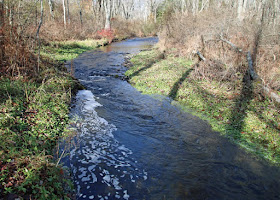Following a meeting Wednesday of the Commonwealth Drought Task Force, the Department of Environmental Protection announced no changes in county drought declarations, despite recent precipitation.
Conditions will continue to be monitored, with drought declarations reassessed when the task force meets again in two weeks.
With persistent dry conditions, groundwater levels and stream flows have been affected.
“While some streamflow has increased from the precipitation in the past 24 hours, long-term benefits to groundwater are uncertain, as groundwater levels often lag behind streamflow increases,” said DEP Acting Secretary Patrick McDonnell. “We’ll continue monitoring daily for two more weeks before determining whether drought declaration changes are warranted.”
Four counties - Carbon, Lehigh, Monroe, and Northampton - were put on drought warning status on November 3. Thirty counties were put on drought watch status.
Precipitation departure is one measurement—along with groundwater level, streamflow, and soil moisture—that DEP uses to determine drought status.
In the 34 counties under watch and warning status, precipitation currently ranges from about 3 inches to almost 8 inches below average normals over the past 90 days.
Forecasts call for some continued precipitation over the next two weeks.
Counties on drought watch are Adams, Bedford, Berks, Bucks, Centre, Chester, Clinton, Cumberland, Dauphin, Delaware, Franklin, Fulton, Huntingdon, Juniata, Lackawanna, Lancaster, Lebanon, Luzerne, Mifflin, Montgomery, Northumberland, Perry, Philadelphia, Pike, Schuylkill, Snyder, Sullivan, Union, Wayne, and York Counties.
Citizens are encouraged to reduce their nonessential water use by 5 percent.
A drought emergency, which requires a proclamation from the Governor, has not been declared for any county. An emergency calls for mandatory restrictions on nonessential water use to protect water supplies as well as public health and safety.
The DEP has not issued any mandatory water restrictions.
Drought watch and warning declarations in late fall/early winter, while not common, have occurred several times in the past decade, in 2011, 2010, and 2008.
The Drought Task Force will meet next on December 16.
The Drought Task Force will meet next on December 16.
DEP suggests several steps citizens can take to voluntarily reduce their water use:
-- Run water only when necessary. Don’t let the faucet run while brushing your teeth or shaving. -- Shorten the amount of time you let the water run to warm up before you shower. Use a bucket to catch the water and then reuse it to water your plants.
-- Run the dishwasher and washing machine only with full loads.
-- Check for household leaks. A leaking toilet can waste up to 200 gallons of water each day.
-- Replace older appliances with high-efficiency, front-loading models that use about 30 percent less water and 40 to 50 percent less energy.
-- Install low-flow plumbing fixtures and aerators on faucets.
DEP also offers other water conservation recommendations and water audit procedures for commercial and industrial users, such as food processors, hotels and educational institutions.
These recommendations and additional drought monitoring information are available on DEP’s Drought Information webpage.
Related Stories:
Monroe, Wayne County Farmers, Ag Businesses Eligible For SBA Drought Disaster Loans
Water Released From NY Reservoir For First Time To Deal With Susquehanna Drought
Monroe, Wayne County Farmers, Ag Businesses Eligible For SBA Drought Disaster Loans








